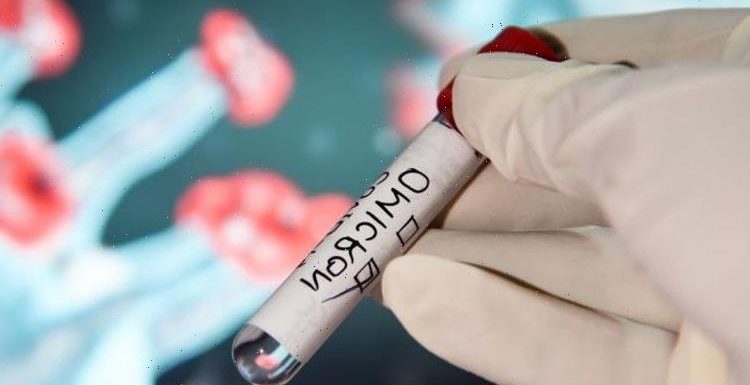
Omicron: SAGE warning calls for policy decisions 'sooner'
We use your sign-up to provide content in ways you’ve consented to and to improve our understanding of you. This may include adverts from us and 3rd parties based on our understanding. You can unsubscribe at any time. More info
These antibodies target areas of the virus spike protein are kept unchanged as the viruses mutate. Spike proteins are a key biological characteristic of SARS-CoV-2 viruses that allow them to penetrate host cells and cause infection. Professor David Veesler, an investigator with the Howard Hughes Medical Institute, said that by identifying the targets of these “broadly neutralising” antibodies on the spike protein, it might be possible to design vaccines and antibody treatments that will be effective against Omicron and future variants.
He said: “This finding tells us that by focusing on antibodies that target these highly conserved sites on the spike protein, there is a way to overcome the virus’ continual evolution.”
Prof Veesler led the research project with Davide Corti of Humans Biomed SA, Vir Biotechnology, in Switzerland.
The Omicron variant has 37 mutations in the spike protein, which it uses to latch onto and invade cells.
This is a strangely large number of mutations.
It is believed that these changes partly explain why the variant has been able to spread so quickly.


It also helps to explain why the variant has infected people who have been vaccinated and has been reinfecting people who have previously tested positive for COVID-19.
Prof Veesler said: “The main questions we were trying to answer were – how has this constellation of mutations in the spike protein of the Omicron variant affected its ability to bind to cells and to evade the immune system’s antibody responses?”
Prof Veesler and his colleagues suspect that Omicron’s large number of mutations may have gathered up during a prolonged infection in someone with a weakened immune system.
But they also speculate that the mutations may have come as a result of the virus jumping from humans to an animal species, and then back again.
To assess the impact of these mutations, the researchers engineered a virus that does not replicate, called a pseudovirus, to produce spike proteins on its surface.

Then, they made pseudoviruses that had spike proteins (which latch onto and invade cells) with the Omicron mutations and those found in the earliest COVID-19 variants that have been seen in the pandemic.
They found the Omicron variant spike protein was able to bind 2.4 times better than spike protein found in the virus isolated at the very beginning of the pandemic.
Prof Veesler explained: “That’s not a huge increase, but in the SARS outbreak in 2002-2003, mutations in the spike protein that increased affinity were associated with higher transmissibility and infectivity.”
The researchers then looked at how well antibodies against earlier strains of the virus protected against the omicron variant.
They took antibodies from patients who had previously been infected with earlier Covid strains.
DON’T MISS
Elon Musk sparks China fury over near miss space station collision [REPORT]
Archaeology breakthrough after human remains found in Aztec pyramid [INSIGHT]
Covid horror as ANOTHER new variant discovered in France [REVEAL]

They also took antibodies from people who were vaccinated against earlier variants, and from people who had been infected and then vaccinated afterwards.
The researchers found that antibodies from people who had been infected by earlier strains and from those who had received one of the six most-used vaccines currently available all had reduced ability to block infection.
While some vaccines like Sputnik V had little or ability to block – or “neutralise” – the omicron variant’s entry into cells, other vaccines proved more effective.
They found that antibodies from people who had received two doses of the Moderna, Pfizer/BioNTech, and AstraZeneca vaccines did keep some neutralising activity.
And antibodies from people who had been infected, recovered, and then had two doses of vaccine also had reduced activity by 20- to 40-fold, which is much more compared with any other variants.

But the reduction was less in people who had been infected, recovered, and then had two doses of vaccine, which shows that getting vaccinated even after you have been infected is useful.
And a third group who had received a booster with a third dose of the mRNA vaccines produced by Moderna and Pfizer/BioNTech showed only a 4-fold reduction in neutralizing activity.
Prof Veesler said: “This shows that a third dose is really, really helpful against Omicron.”
He also said that the finding that antibodies are able to neutralize in so many different variants of the virus suggests that designing vaccines and antibody treatments that target certain regions could be effective against a number of different variants that form from mutations.
The study’s findings were published December 23 in the journal Nature.
Source: Read Full Article